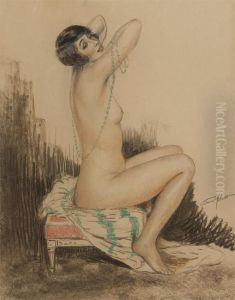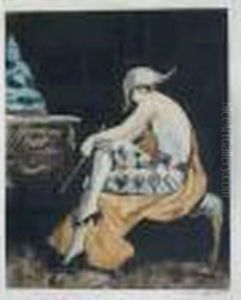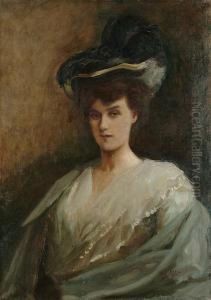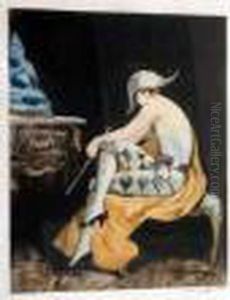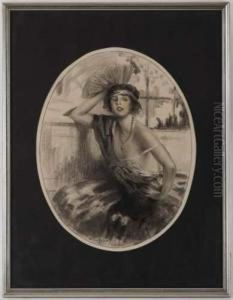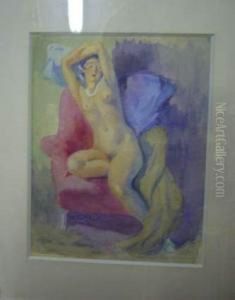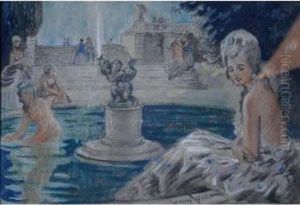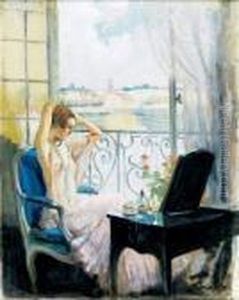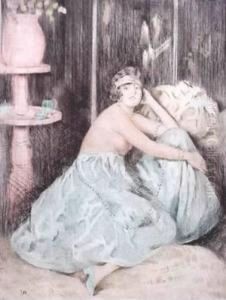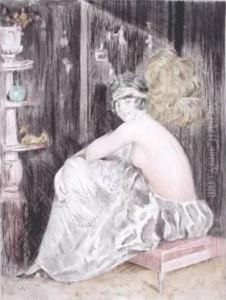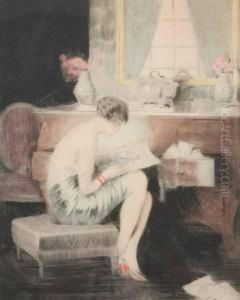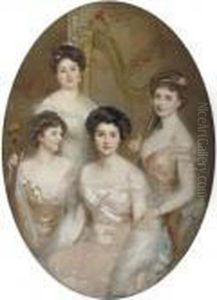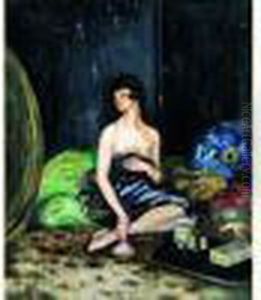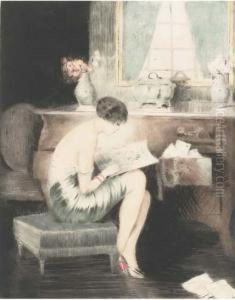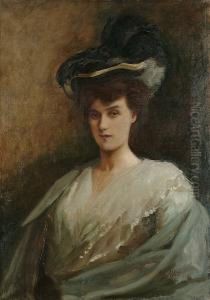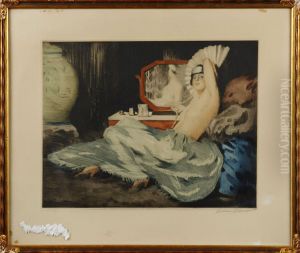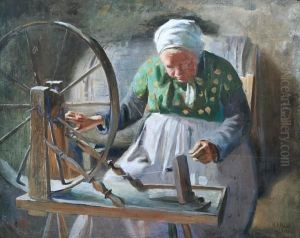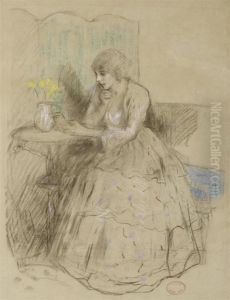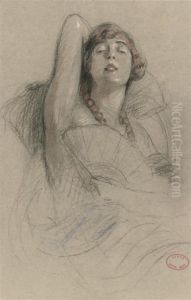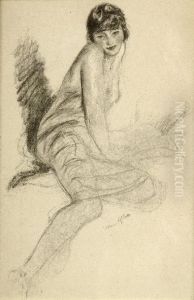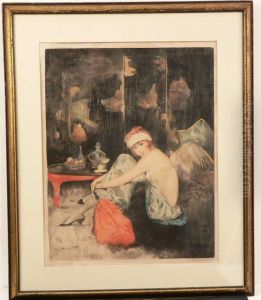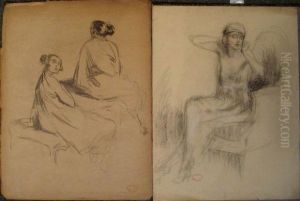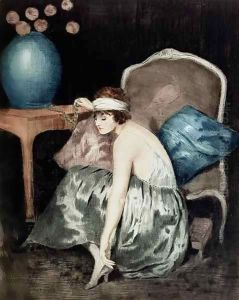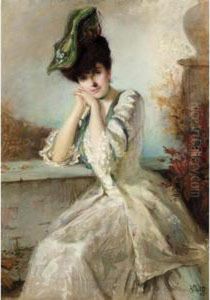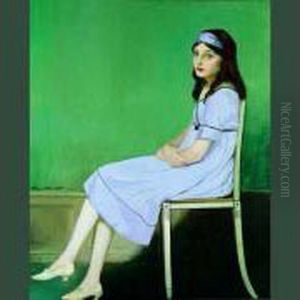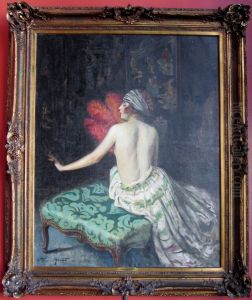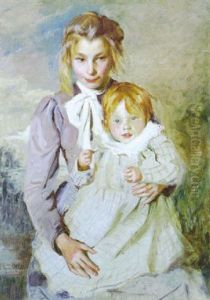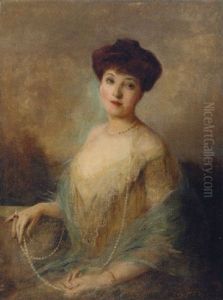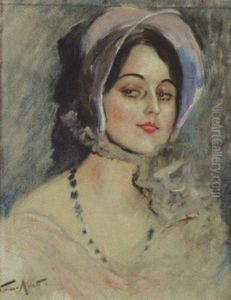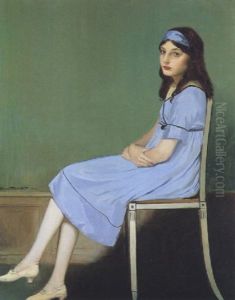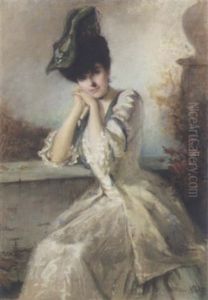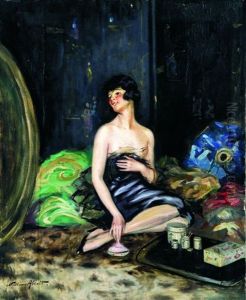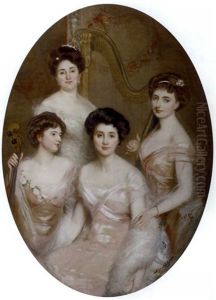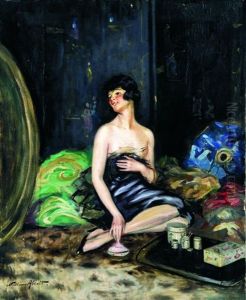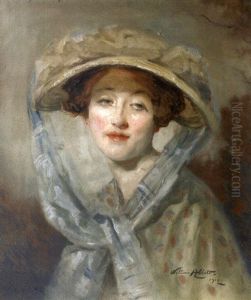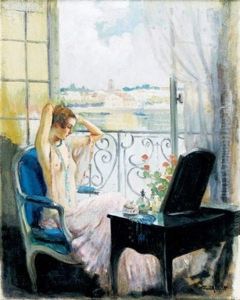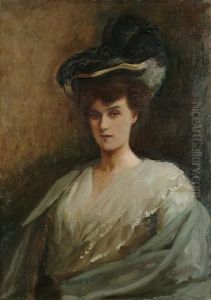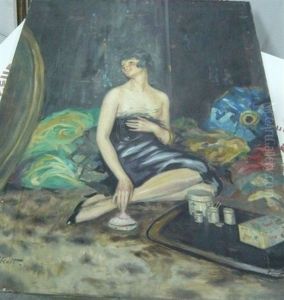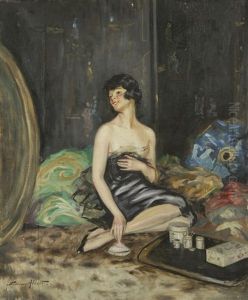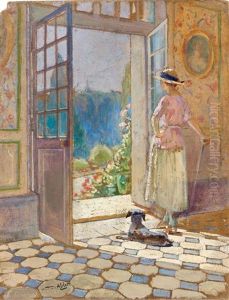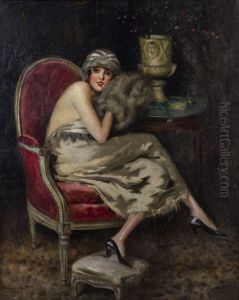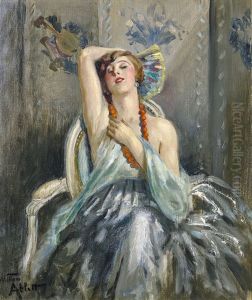William Ablett Paintings
William Ablett was born in Paris, France, in 1877 to English parents. He was an artist known for his fine illustrations and printmaking, particularly in the realm of fashion. Ablett's work reflects the Art Deco style that was prevalent during his career, which spanned the late 19th and early 20th centuries, a period known for its embrace of modernism and decorative arts.
Ablett was educated at the École des Beaux-Arts in Paris, which was the premier art institution in France and a hub for many aspiring artists of the time. He studied under the French painter Jean-Léon Gérôme, a key figure in the academic painting tradition, which deeply influenced Ablett's initial approach to art. However, as his career progressed, Ablett found his niche in graphic arts, a field that allowed him more freedom to explore the emerging styles of his era.
Throughout his career, Ablett became particularly well-known for his depictions of elegant women, capturing the fashion and spirit of the time with a sense of movement and sophistication. His illustrations often graced the pages of high-end fashion magazines, contributing to the visual culture that defined Parisian and indeed broader European aesthetic sensibilities. In his works, one can often note the intricate details of the clothing, the flow of fabrics, and the poised demeanor of his subjects, all rendered in a style that harmonized with the Art Deco movement's love for geometry and streamlined forms.
Ablett's etchings and prints were highly sought after, and he was an active participant in the thriving Parisian art scene. His works were exhibited in various shows, including the Salon des Artistes Français, an annual exhibition that was one of the most prestigious art events in the country. Ablett's contribution to the field of illustration and printmaking was significant in that he captured the essence of an era that was characterized by rapid changes in fashion and social norms.
William Ablett passed away in 1937, leaving behind a body of work that continues to be appreciated for its elegance and historical value. His illustrations are not only artistic expressions but also documents of the style and trends of the early 20th century. His legacy is preserved in the collections of various museums and in the pages of the period's fashion publications, serving as an inspiration for both art enthusiasts and historians alike.
